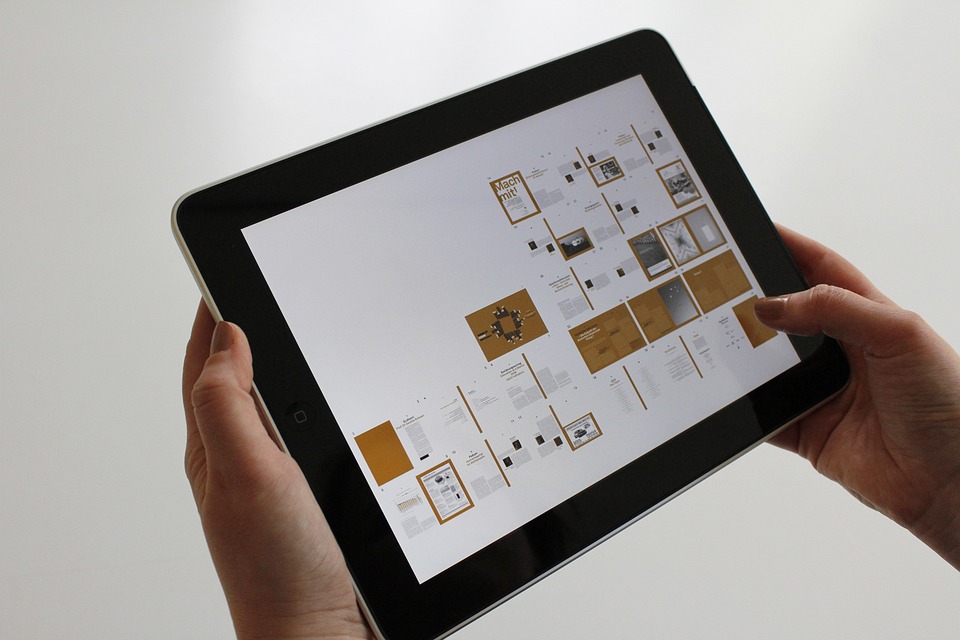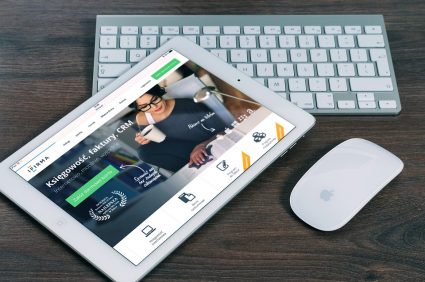
Tablet displays are the screens on tablets that allow users to view and interact with content. A good display is essential for any tablet to be successful, as it can make or break the user experience. It is important for users to understand the different types of displays available and how to choose the right one for their needs.
Content of the page
What are Tablet Displays?
Tablet displays are the screens found on tablets, which allow users to view and interact with content. These displays come in a variety of sizes and resolutions, and they are usually measured in pixels. The more pixels a display has, the higher the resolution and the sharper the image will be.
Tablet displays are usually made up of two components: the LCD panel and the touch screen. The LCD panel is responsible for displaying the image, while the touch screen is responsible for detecting user input.
The Importance of Good Display in Tablets

A good display is essential for any tablet to be successful, as it can make or break the user experience. A good display will provide a sharp image and accurate colors, as well as a responsive touch screen. A bad display, on the other hand, can lead to user frustration and a poor overall experience.
Having a good display will also allow users to get the most out of their tablet. A good display will make it easier to read text, watch videos, and play games. It will also allow users to take advantage of the many features available on their tablet.
How to Choose the Right Tablet Display?
When it comes to choosing the right tablet display, there are a few things to consider. First, consider the size of the display. Smaller displays may be more portable, but they may also be harder to read and interact with. Larger displays, on the other hand, may be easier to use but may not be as portable.
Next, consider the resolution of the display. Higher resolution displays will provide sharper images and more accurate colors. However, they may also require more power to run, resulting in a shorter battery life.
Finally, consider the type of display. Different types of displays provide different benefits, such as improved viewing angles or better color accuracy. It is important to understand the differences between the different types of displays before making a decision.
Types of Tablet Displays
LCD Displays
LCD (liquid crystal display) displays are the most common type of display used in tablets. They are usually the most affordable option and are usually the most power-efficient. LCD displays provide a good image quality and are usually available in a variety of sizes.
OLED Displays
OLED (organic light-emitting diode) displays are a newer type of display technology that provide better colors and wider viewing angles than LCD displays. They are also more power-efficient than LCD displays, but they tend to be more expensive.
AMOLED Displays
AMOLED (active-matrix OLED) displays are similar to OLED displays, but they are more power-efficient. They are usually more expensive than LCD displays, but they provide better colors and wider viewing angles.
IPS Displays
IPS (in-plane switching) displays are a type of LCD display that provide better colors and wider viewing angles than traditional LCD displays. They are usually more expensive than LCD displays, but they provide an improved image quality.
Retina Displays
Retina displays are a type of display technology developed by Apple. They provide a very high resolution, resulting in a sharp and detailed image. They are usually more expensive than other types of displays, but they provide an excellent image quality.
Comparing Different Types of Displays
When it comes to choosing the right type of display for a tablet, it is important to understand the differences between the different types of displays. LCD displays are usually the most affordable option and provide good image quality, but they may not have the best viewing angles or color accuracy. OLED and AMOLED displays provide better colors and wider viewing angles, but they tend to be more expensive. IPS displays are similar to LCD displays but provide better colors and wider viewing angles. Retina displays provide a very high resolution and excellent image quality, but they tend to be the most expensive option.
| Display Type | Pros | Cons |
|---|---|---|
| LCD | – Bright and colorful – Can be inexpensive – Good for reading and web browsing |
– Limited viewing angles – May suffer from motion blur or ghosting – Can consume more power than other display types |
| OLED | – Excellent contrast and colors – Deep blacks and vibrant colors – Energy efficient |
– Can suffer from burn-in over time – May be more expensive than other display types – May not be as bright as LCD displays |
| AMOLED | – Excellent contrast and colors – Deep blacks and vibrant colors – Energy efficient – Can offer curved or flexible screens |
– Can suffer from burn-in over time – May be more expensive than other display types – May not be as bright as LCD displays |
| IPS | – Wide viewing angles – Good color accuracy – Consistent performance |
– Can be more expensive than other display types – Can consume more power than other display types |
| Retina Display (Apple) | – High pixel density – Crisp and clear images – Good color accuracy |
– May be more expensive than other display types – Limited to Apple devices |
Factors Affecting Tablet Display Quality
When choosing a tablet, it’s important to consider the display quality. The display is one of the most important features of any device and is an essential part of the user experience. Understanding the various factors that affect tablet display quality can help you make an informed decision when shopping for a tablet.
Resolution
Resolution is the measure of the number of pixels a display has. The higher the resolution, the more detail can be seen in an image. High resolution displays are the standard for modern tablets, with most having a resolution of at least 1920×1080. This is usually enough to provide a sharp, clear image.
Pixel Density
Pixel density is a measure of the number of pixels per inch (ppi) of a display. The higher the pixel density, the sharper and clearer the image will be. Most tablets have a pixel density of at least 300 ppi, which is enough to provide a good viewing experience.
Color Gamut
The color gamut of a display is the range of colors it can produce. A wider color gamut means more vibrant and accurate colors, while a narrower color gamut means duller and less accurate colors. Most modern tablets have a wide color gamut, allowing them to produce vivid and lifelike colors.
Brightness
The brightness of a display is measured in nits. The higher the brightness, the easier it will be to see the display in bright environments. Most tablets have a brightness of at least 300 nits, which is enough for comfortable viewing in most environments.
Contrast Ratio
The contrast ratio of a display is the ratio of the brightest white to the darkest black. A higher contrast ratio means the display can produce deeper blacks and brighter whites, which can make images appear more realistic. Most modern tablets have a contrast ratio of at least 1000:1, which is enough to produce good image quality.
Refresh Rate
The refresh rate of a display is the number of times per second it updates the image. Higher refresh rates reduce image blur and allow smoother motion. Most tablets have a refresh rate of at least 60 Hz, which is enough to provide a smooth viewing experience.
Viewing Angle
The viewing angle of a display is the angle at which it can be viewed without the image becoming distorted. A wider viewing angle means the display can be viewed from more angles without any distortion. Most tablets have a viewing angle of at least 90 degrees, which is enough for comfortable viewing.
Latest Trends in Tablet Displays
Tablet displays have come a long way in the past few years. With the rapid advancements in technology, tablet displays are now available in a variety of sizes, shapes and features.
Edge-to-edge displays are becoming increasingly popular in tablets. This design allows for an almost bezel-less look, giving the user an immersive experience while using their device. This design reduces the overall form factor of the device, increasing portability.
Flexible displays are also becoming popular in the tablet market. This technology allows for displays that can be bent and folded, making them more durable and easier to use in a variety of situations.
High dynamic range (HDR) displays are also becoming increasingly popular in tablets. HDR displays offer a wider range of colors and contrast, improving the visuals of the device.
Blue light filters have also become a popular feature in tablets. Blue light filters help reduce eye strain when using the device for long periods of time.
How to Care for Your Tablet Display?

Taking good care of your tablet display is important to ensure that it lasts a long time. Here are some tips on how to properly care for your tablet display:
Screen Protectors
Screen protectors are a great way to protect your tablet display from scratches and damage. These protectors are usually made of a thin film that can be applied to the tablet display and will prevent scratches and other damage.
Regular Cleaning
Regularly cleaning your tablet display is important to make sure it stays looking new and free of dirt and dust. Use a soft cloth and an anti-static cleaner to clean the display. Avoid using harsh chemicals, as this can damage the display.
Proper Storage
When not in use, make sure to store your tablet in a dry, cool place. Avoid direct sunlight, as this can damage the display. Also, make sure to turn off the device when not in use to conserve battery life.
Conclusion
Having a good quality tablet display is an important consideration when purchasing a tablet. It can make the difference between a device that is enjoyable to use, and one that is frustrating. A good display will provide a bright and clear picture, with accurate colors, deep blacks, and excellent viewing angles. It will also be free of defects such as dead pixels, discoloration, and backlight bleed.
Importance of a Good Tablet Display
A good tablet display is essential for enjoying your device to the fullest. Poor displays will have a negative impact on the overall experience of using the device. Low-quality displays can have poor viewing angles, low brightness, inaccurate colors, and poor contrast. This can make it difficult to read text and see pictures and videos clearly. In addition, poor quality displays may have dead pixels and backlight bleed, which can be distracting and make your tablet unpleasant to use.
Choosing the Right Tablet Display
When choosing a tablet, it is important to consider the quality of the display. Look for displays with a high resolution, at least 300 pixels per inch (PPI). It should also have good brightness, with a maximum of 400 nits. The colors should be accurate, and the contrast should be high. The viewing angles should also be wide, so you can see the display clearly from any angle.
You may be interested in the next article about tablets with 10 inch display,
Caring for Your Tablet Display
It is important to take proper care of your tablet display to keep it in good condition. Use a screen protector to prevent scratches, and avoid placing your tablet in direct sunlight. Clean the display with a soft, dry cloth and avoid using any harsh chemicals or abrasives. Be sure to keep your tablet away from extreme temperatures, which can cause damage to the display.
